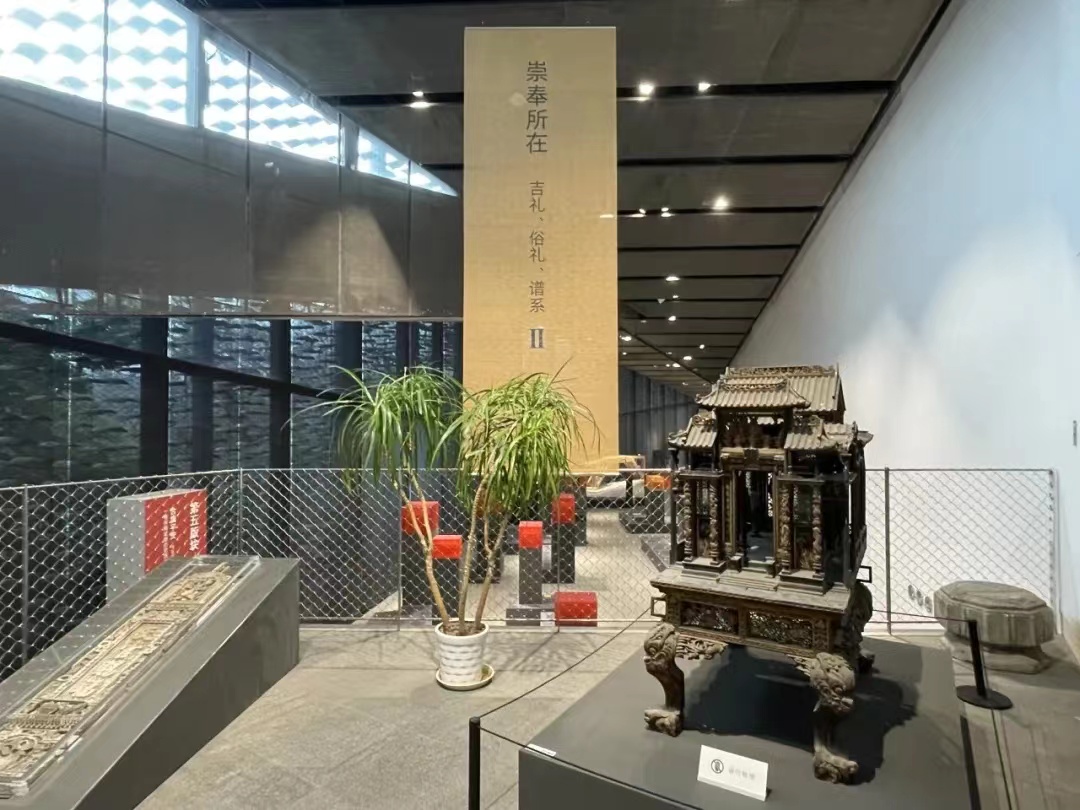

Recently, a cultural relic carrying a long history,the "Thean Hou Temple Sedan" from Houjie, Dongguan,was exhibited in the exhibition hall of the Crafts Museum of the China Academy of Art, attracting widespread attention from society.
Coincidentally, the Guangdong provincial intangible cultural heritage project "Wooden dragon dance" from Houjie Town, Dongguan, has also officially settled in the Guangdong Museum of Art (BAIETAN).
1 Showecased at the exhibition hall
After professional cleaning by experts from the museum, the "Thean Hou Temple Sedan Chair" was exhibited on April 21st at the Crafts Art Museum of CAA, becoming a major highlight of the exhibition.
It is reported that this artifact dates back to the late Qing Dynasty and the early Republic of China period, making it over a hundred years old. It measures 1.15 meters in length, 0.73 meters in width, and 1.43 meters in height, crafted from different woods using traditional mortise and tenon construction. The sedan features a palace-like design with exquisite carvings and a grand, solemn structure, showcasing the traditional style of the Guangfu region.
According to research, during the Ming Dynasty, Houjie Town was a coastal town where local residents worshipped Mazu (the Chinese Goddess of the Sea) and held a special folk event annually in the third lunar month. The "Thean Hou Temple Sedan" served as an important carrier for this event.
2 Wooden Dragon Dance
On May 1st, over a hundred representative intangible cultural heritage projects were officially opened to the public at the Guangdong Museum of Art (BAIETAN).
Among them, the "Wooden Dragon Dance" from Houjie, Dongguan, as one of the provincial-level intangible cultural heritage projects, was invited to exhibit in a more intuitive way.
The exhibition aims to showcase the unique culture of Houjie Town, emphasizing the traditional spirit of unity embodied in the "Wooden Dragon," and highlighting the dissemination and influence of Lingnan culture.
The dragon head is carved from good wood, with an exquisite shape, generally measuring about 1.2 to 1.5 meters long, and weighing about 15 kilograms. The vivid wooden dragon head features a square forehead, fleshy horns, bulging eyes, an open mouth, and whiskers.
According to records, in order to preserve the Dragon Boat Festival dragon boat racing tradition in mountainous areas, people could only perform dragon dance on land. It is said that the custom of "Wooden Dragon dance" began during the period of the Southern Song Dynasty (1158 AD), and has a history of over 800 years to this day.